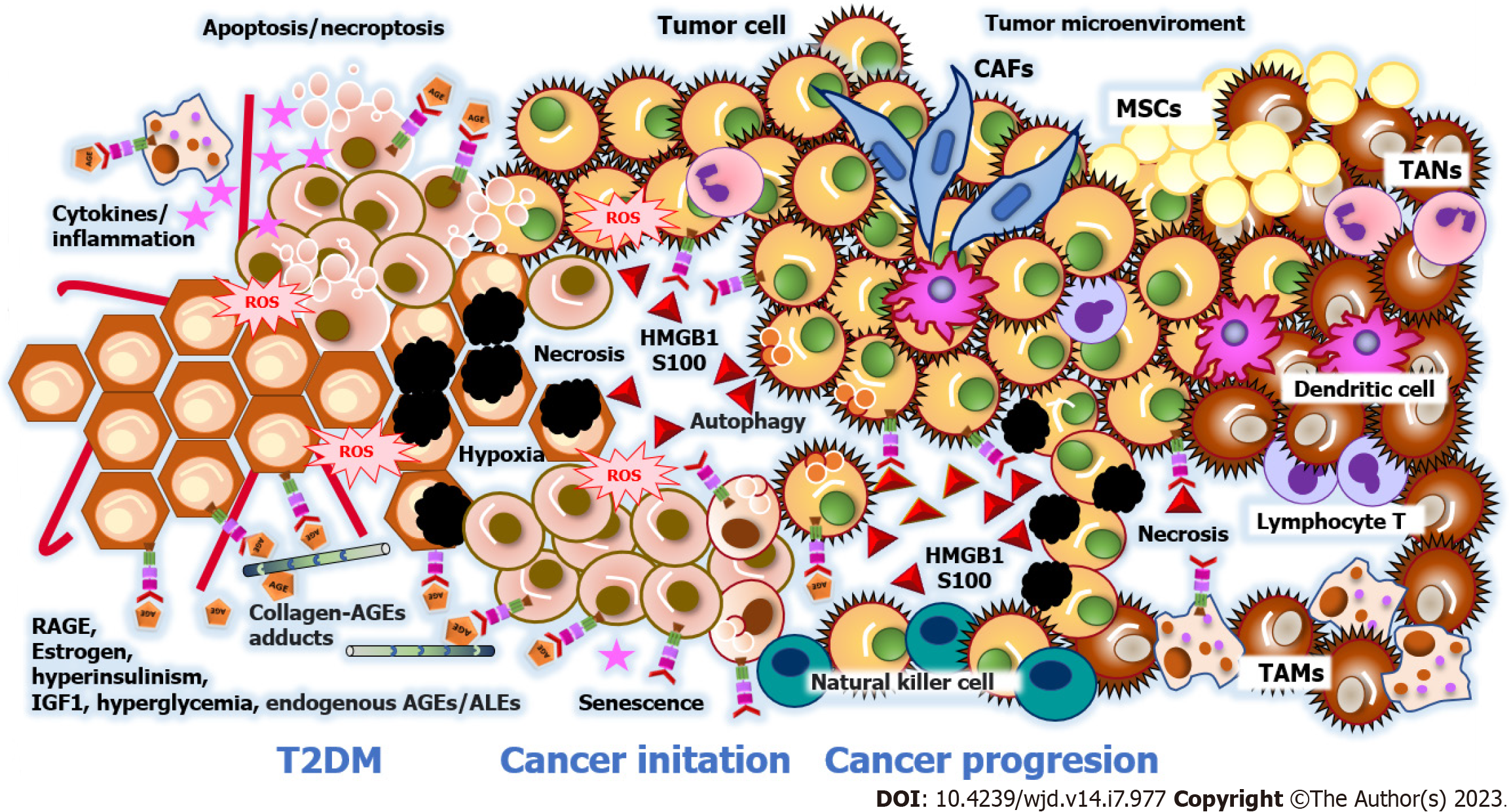Copyright
©The Author(s) 2023.
World J Diabetes. Jul 15, 2023; 14(7): 977-994
Published online Jul 15, 2023. doi: 10.4239/wjd.v14.i7.977
Published online Jul 15, 2023. doi: 10.4239/wjd.v14.i7.977
Figure 2 Tumor microenvironment in type 2 diabetes mellitus.
In type 2 diabetes mellitus patients, elevated estrogen levels, hyperinsulinemia, insulin-like growth factor-1 levels, hyperglycemia, endogenous advanced glycosylation end products (AGEs), and advanced lipoperoxidation end products (ALEs) promote cancer initiation and progression in the tumor microenvironment (TME). Receptor for advanced glycation products (RAGE) plays an essential role in the TME by promoting inflammation, oxidative stress, endotoxin clearance, senescence, and programmed cell death by binding to endogenous AGE/ALE ligands and damage-associated molecular patterns, primarily the high mobility group box 1 proteins and S100 proteins. To overcome a hypoxic and acidic microenvironment, tumor cells coordinate a metabolic program (Warburg effect), cell survival (senescence and cell death program), angiogenesis, extracellular matrix remodeling, proliferation, invasion, and metastasis. Tumor cells interact with resident immune cells and recruit mesenchymal stromal cells, cancer-associated fibroblasts, tumor-associated macrophages, tumor-associated neutrophils. RAGE: Receptor for advanced glycation products; ROS: Reactive oxygen species; T2DM: Type 2 diabetes mellitus patients; IGF-1: Insulin-like growth factor-1; AGEs: Advanced glycosylation end products; ALEs: Advanced lipoperoxidation end products; HMGB1: High mobility group box 1 proteins; MSCs: Mesenchymal stromal cells; CAFs: Cancer-associated fibroblasts; TAMs: Tumor-associated macrophages; TANs: Tumor-associated neutrophils.
- Citation: Garza-Campos A, Prieto-Correa JR, Domínguez-Rosales JA, Hernández-Nazará ZH. Implications of receptor for advanced glycation end products for progression from obesity to diabetes and from diabetes to cancer. World J Diabetes 2023; 14(7): 977-994
- URL: https://www.wjgnet.com/1948-9358/full/v14/i7/977.htm
- DOI: https://dx.doi.org/10.4239/wjd.v14.i7.977









